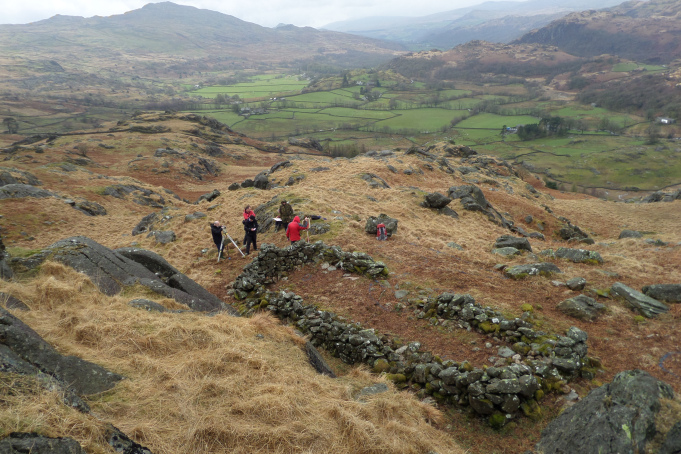A large part of the Duddon Valley Longhouses project led by Oxford North archaeologists is about engaging with a wider audience, both young and old. A number of strategies are in place to deal with this, but to engage the younger members of the local community, an active schools programme has been initiated.
Six local primary schools will be involved in the project during the three years of excavation. Each year, two schools will be selected as key schools and they will have greater participation for that season. For 2016 it is the schools at Haverigg and Broughton in Furness. The high participation schools will receive visits from Oxford Archaeology North which will include a presentation about archaeology in general, and another specifically about the dig site and the medieval period. The children will also rotate through four practical activities in groups; looking and handling a selection of finds from prehistory to the modern-day, reconstruction, sieving for small finds and using a planning grid to draw an “excavation trench” in the classroom. The schools will also have a site visit, where they will be given a guided tour and explanation of the site. In addition they will get the opportunity to excavate and plan features on the site, and to look at finds for the medieval period.
The other schools, Black Combe, St James, Thwaites, and Captain Shaw’s, will have a similar day in school run by the group and a site visit that will give them information and a view of the site but with a lower level of involvement. They will get their chance to be key schools in the following years.
The Longhouse project is an initiative from the Duddon Valley Local History Group, in conjunction with the Lake District National Park Authority, the National Trust and Oxford Archaeology North. The project will involve are undertaking a programme of survey and excavation of three medieval long houses in the Duddon Valley near Seathwaite Tarn. The aim of the programme is to discover the history of these fascinating monuments and their associated upland landscape.
Learn more about the whole project here at a dedicated website:
https://duddondig.wordpress.com/2016/05/05/welcome-to-the-duddon-dig-blog/

